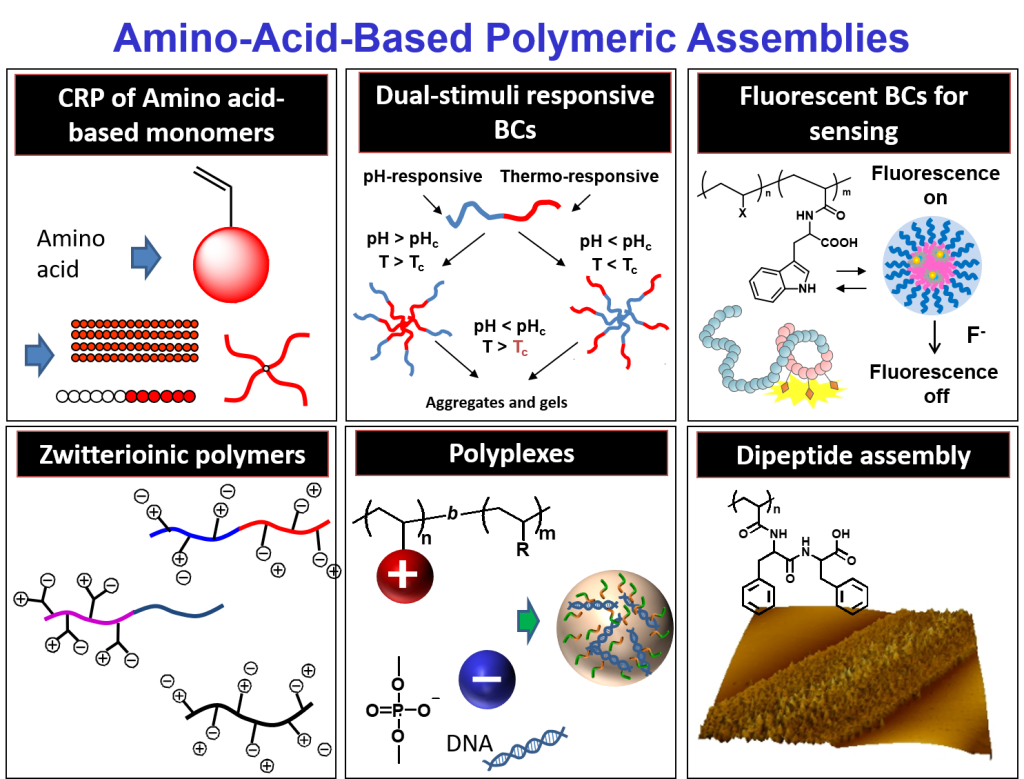Synthetic chemists consider proteins to be the ultimate polymers because of their high molecular weight, uniform chain length, and presence of precisely controlled monomer sequences, which result in hierarchical folding and organization. As a part of our continued efforts to construct highly ordered architectures based on amino acids, we attempt to develop precise synthetic methods to control the molecular weight, polydispersity, topology, composition, sequence, and functions of the polymers derived from amino acids. We also focus on the self-organization of amino-acid-based block copolymers having characteristic properties, including stimuli-responsive, amphiphilic, and double-hydrophilic block copolymers.
Our recent research focuses on the development of diphenylalanine-based polymers having hierarchical self-assembled structures such as nanorods, large nanofiber-like microcrystals, and fiber bundles; amino-acid-based polymers having specific interactions with DNA and proteins; and zwitterionic polymers/polyampholytes containing pendant anionic and cationic units.

